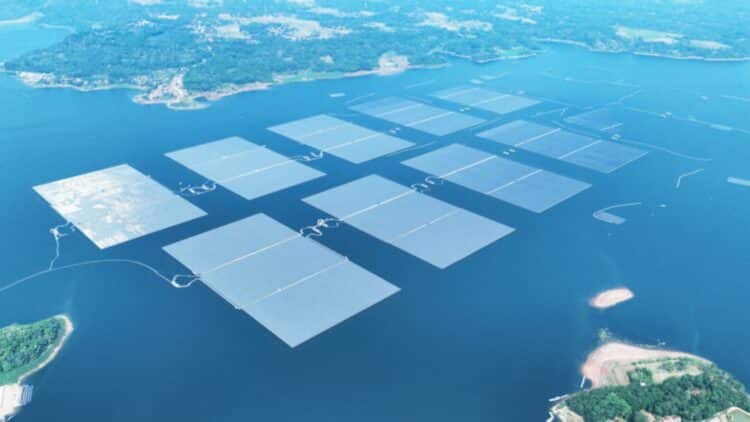Wind power has long been considered the world’s main bet to accelerate the energy transition. Giant turbines have begun to dominate the landscapes, and this trend has received billions in investments and made headlines as a symbol of the future. However, amid all this, and silently, a new alternative has begun to gain strength. And it does not require constant winds or disputes over land. We are talking about the floating solar plant.
What exactly is this Floating solar plant?
Ok, but what are these floating solar plants? Well, they are inspired by artificial islands, where solar platforms are installed directly on the water. This type of construction has already caught the attention of governments and companies due to its efficiency, aesthetics and versatility. This is because, instead of competing with plantations, nature reserves or urban centers, they take advantage of underutilized spaces: dams, lakes and reservoirs.
And it doesn’t stop there, because another positive point of this new model is that it fits in very well with the hydroelectric plants that already exist. This is because these floating plants are located in artificial reservoirs, that is, they take advantage of a structure that is already ready.
Is anyone already investing in this idea?
The most interesting thing is that this model is no longer just a new concept and is already taking shape in France. The solar energy subsidiary of Électricité de France (EDF), known as EDF Renouvelables, is developing a floating solar plant project that combines photovoltaic technology with an existing hydroelectric reservoir (like this mega hydroelectric plant). The project will be built in the southeast of France, in the Isère department, and promises to be operational by 2027.
The idea is to have approximately 70,000 solar panels floating on the waters of the Cheylas dam. An annual production of 60 GWh is expected, enough energy to supply around 28,000 people. It is also worth mentioning that the installed capacity will be 44 MWp, consolidating the project as one of the largest initiatives of its kind in Europe.
If we compare this new construction with something we normally see, we will come across an archipelago. This is because these solar blocks seem to float on water. They are all carefully placed to make the most of the sunlight, without causing major impacts on the environment. That said, we can say that the idea was really to take inspiration from natural forms, such as artificial islands or solar reefs.
It’s not just Europe that is investing in floating solar plants
Apparently, outside of Europe, other regions are also accelerating their investments in floating solar plants. One example is Indonesia, which recently inaugurated the third-largest floating plant in the world: the Cirata project. Just to give you an idea, there are 340,000 solar panels on the reservoir of the same name. This plant alone generates 192 MW and provides clean energy for 50,000 homes, in addition to avoiding the emission of 214,000 tons of CO₂ per year.
“We are proud to be part of this project, which is not only strategically important for Indonesia, but also serves as an example for other global economies looking to bolster their decarbonization plans with floating solar technology”, said Ken Yap, Vice President Commercial, ABB Electrification Indonesia.
This new technology is called floatovoltaics. It has already shown that it can be more than just a local solution. In fact, studies indicate that if just 10% of the world’s hydroelectric reservoirs were covered with floating solar panels, it would be possible to generate energy equivalent to that of all fossil-fuel plants in operation. Solar energy is truly reinventing itself and surprising us every day. Another example of this are these origami cells that produce energy anywhere.


